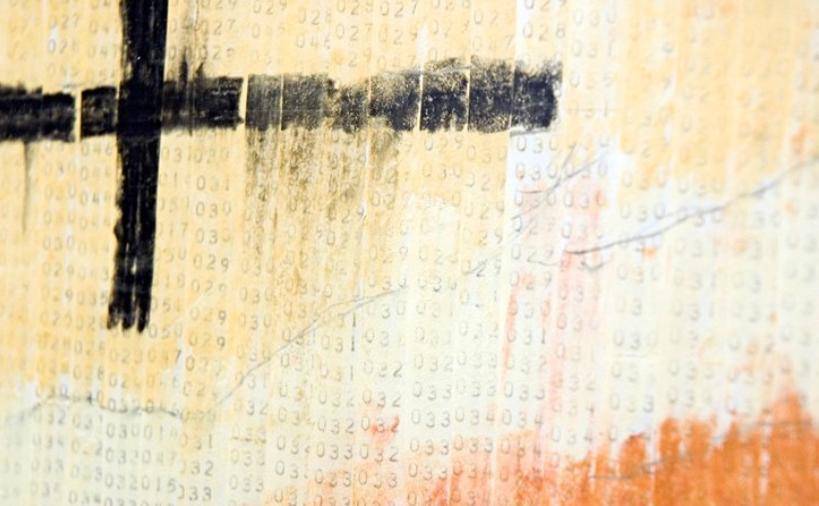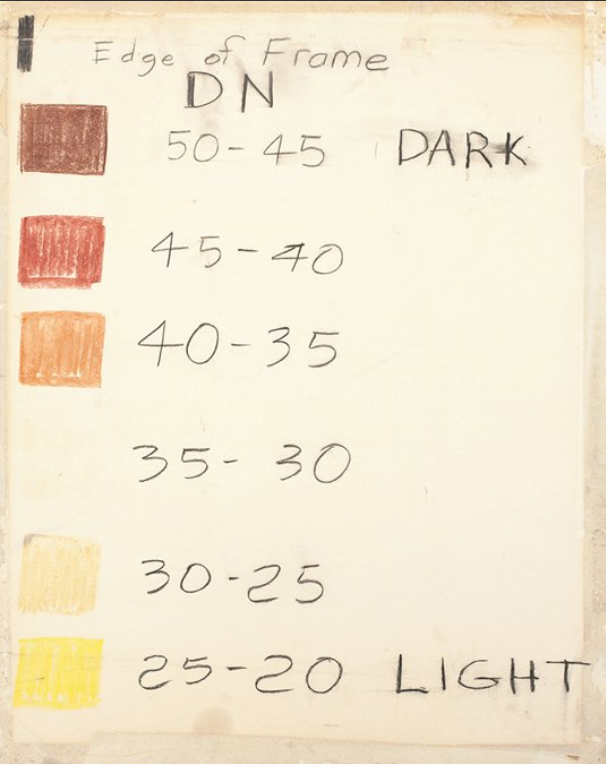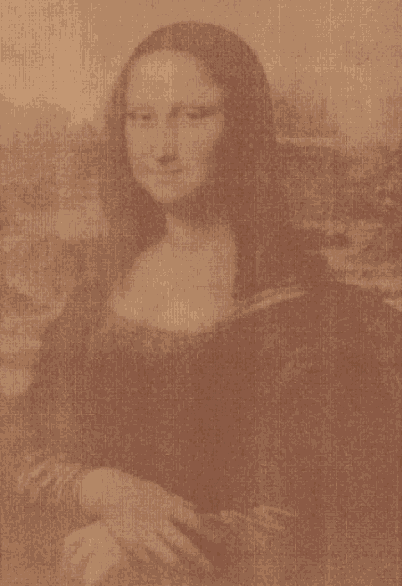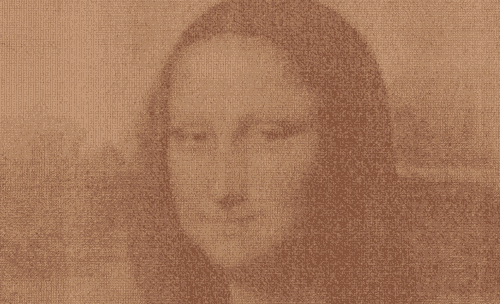The first close-up photos of Mars were taken with an analogue TV-camera and sent to earth as a grid of numbers. Each number represented a colour so scientists painted by numbers to colourize Mars in 1965. h/t @mwichary
Tag Archives: conversion
In the 1960s, Eduardo Joselevich and Fanny Fingerman developed a technique to represent images with only four symbols. Full blocks or circles, in either black or white. They called it Fototrama and it was used at Olivetti and Philips for example.
More here.
Text graphics by Manfred Schroeder at Bell Labs in 1968. For the cover of the exhibition catalogue for Some More Beginnings organised by Experiments in Art and Technology (E.A.T.) at the Brooklyn Museum. h/t: Tim Koch
Mona By The Numbers
Probably the earliest example of computer-generated text art, put together in 1964 by H. Philip Peterson:
In 1964, H. Philip Peterson of Control Data Corporation (CDC) used a CDC 3200 computer and a “flying-spot” scanner to create a digital representation of the Mona Lisa. The image contained 100,000 pixels that were plotted using numerals, sometimes overprinted, to approximate the required density and took 14 hours to complete.Similar digital images of popular art, cartoon characters, and even nudes adorned the walls of corporate offices, labs, and computer centers throughout the 1960s.
You can find out more about the ‘Digital Mona Lisa’ here, and there is an online viewer for closer inspection here
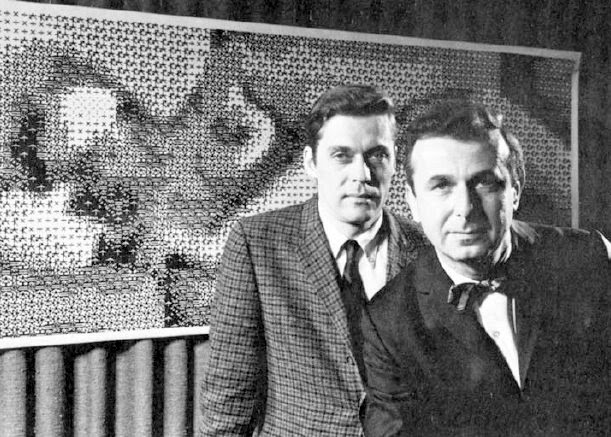
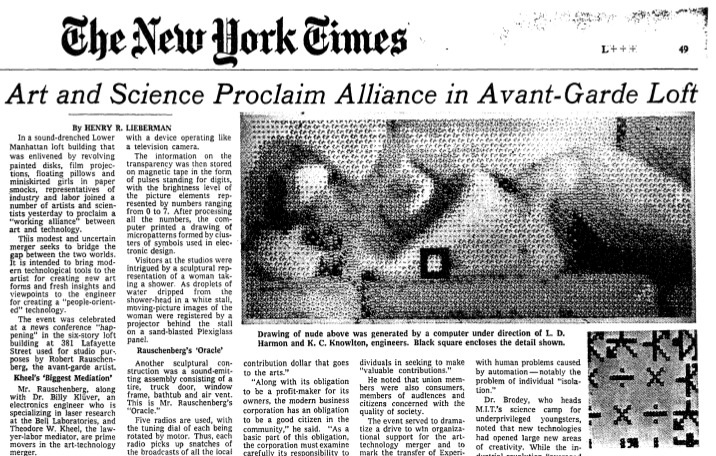
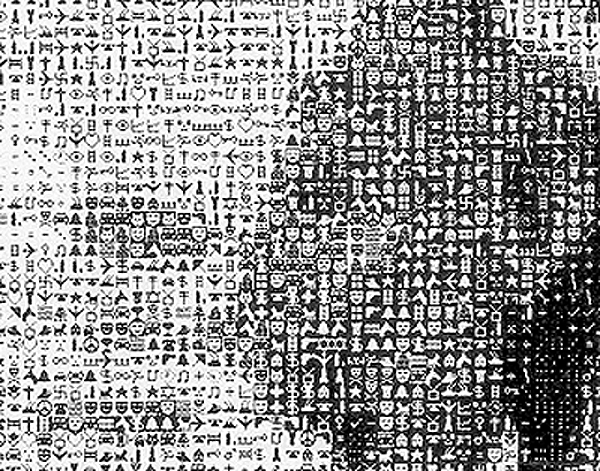
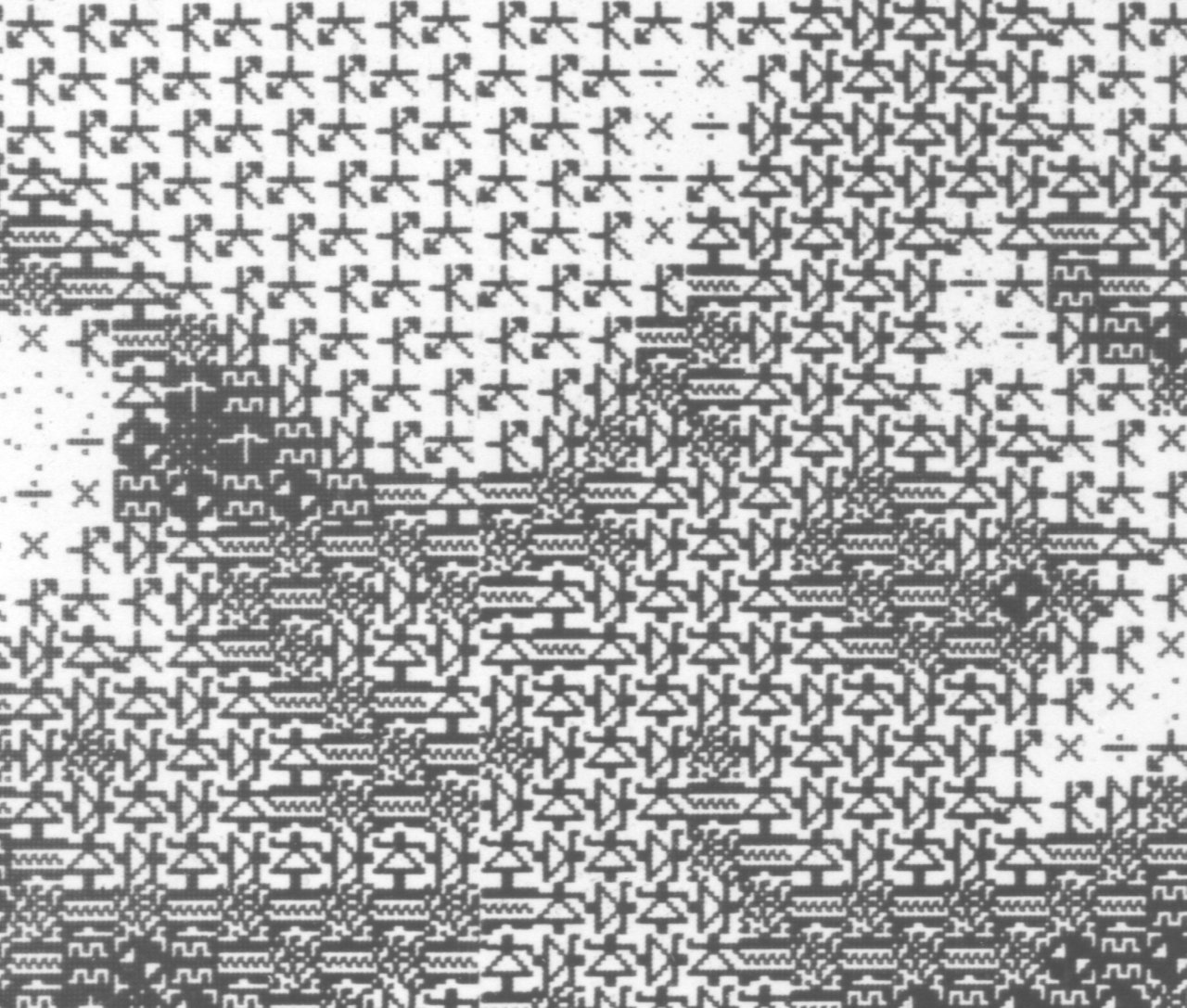
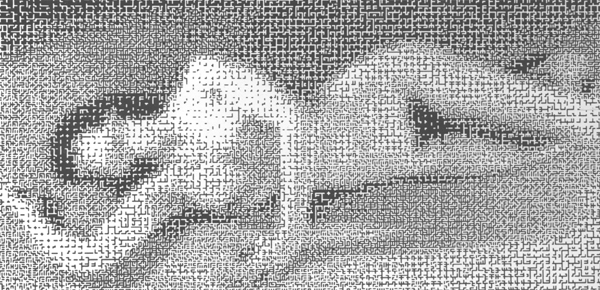
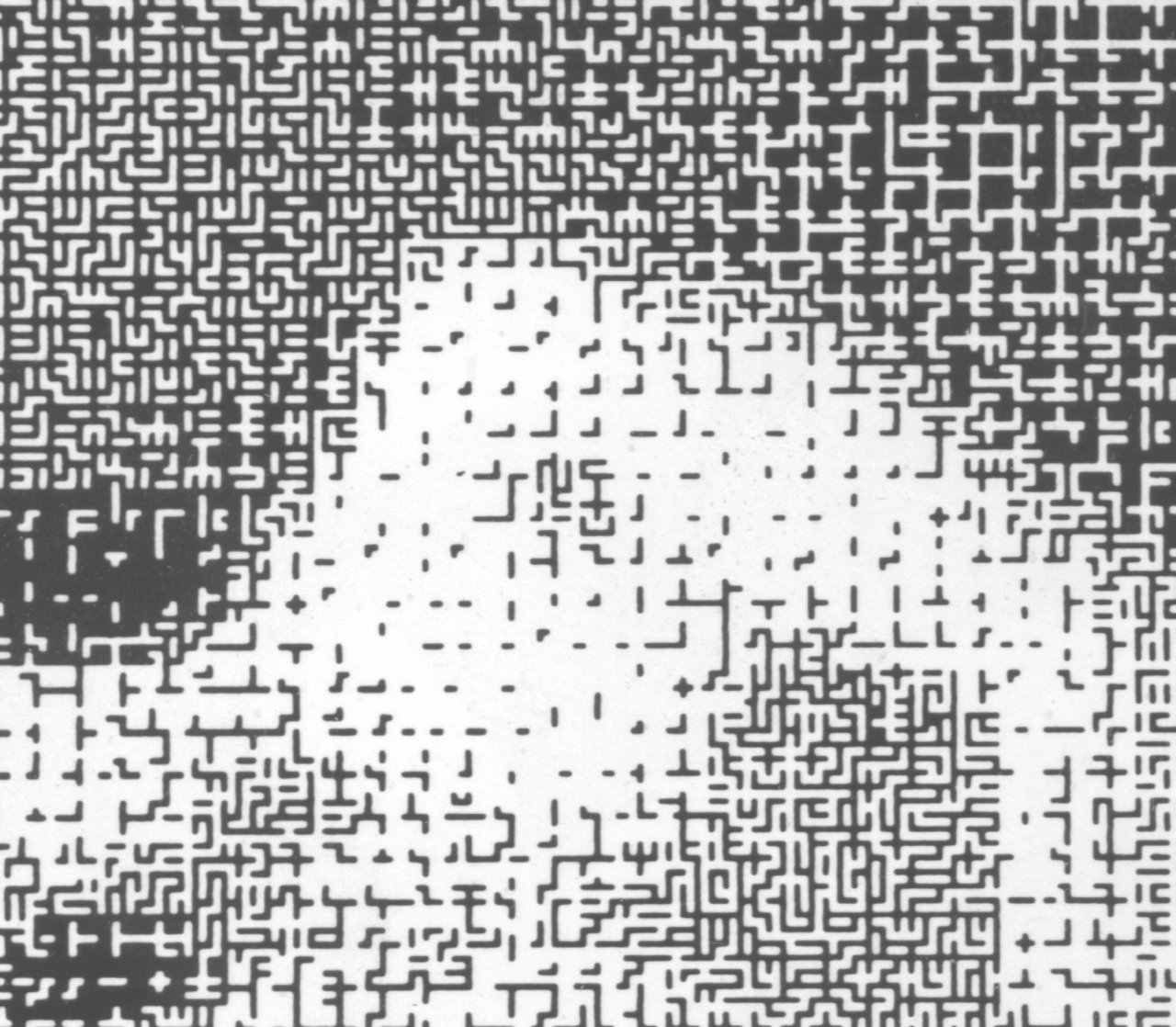
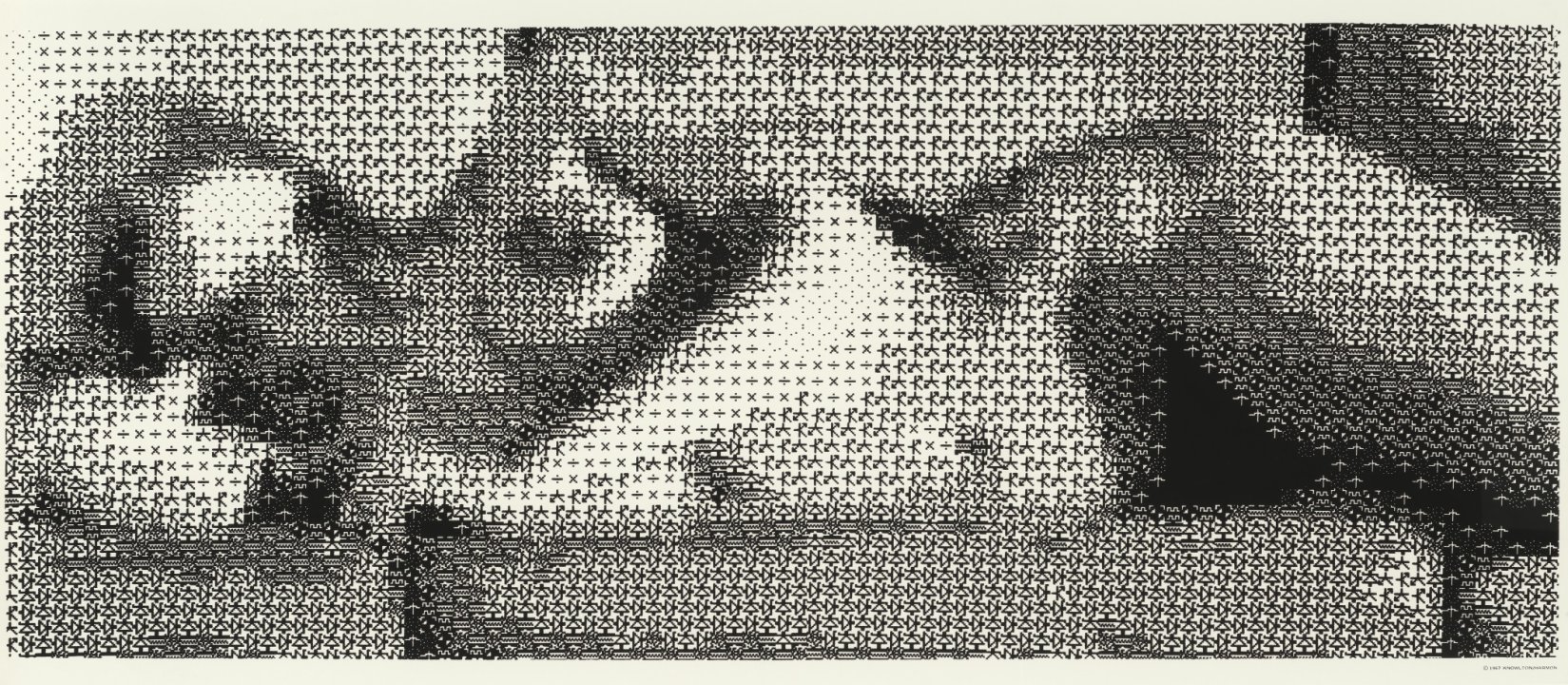
Nude aka Computer Nudes aka Studies in Perception by Ken Knowlton and Leon Harmon, 1966. While this is often called the first ASCII art piece, it doesn’t use any ASCII characters, and it was preceded by for example Digital Mona Lisa (1964).
Some hi-res scans here, thx to chicasyordinadores 4 the link. Also see this.


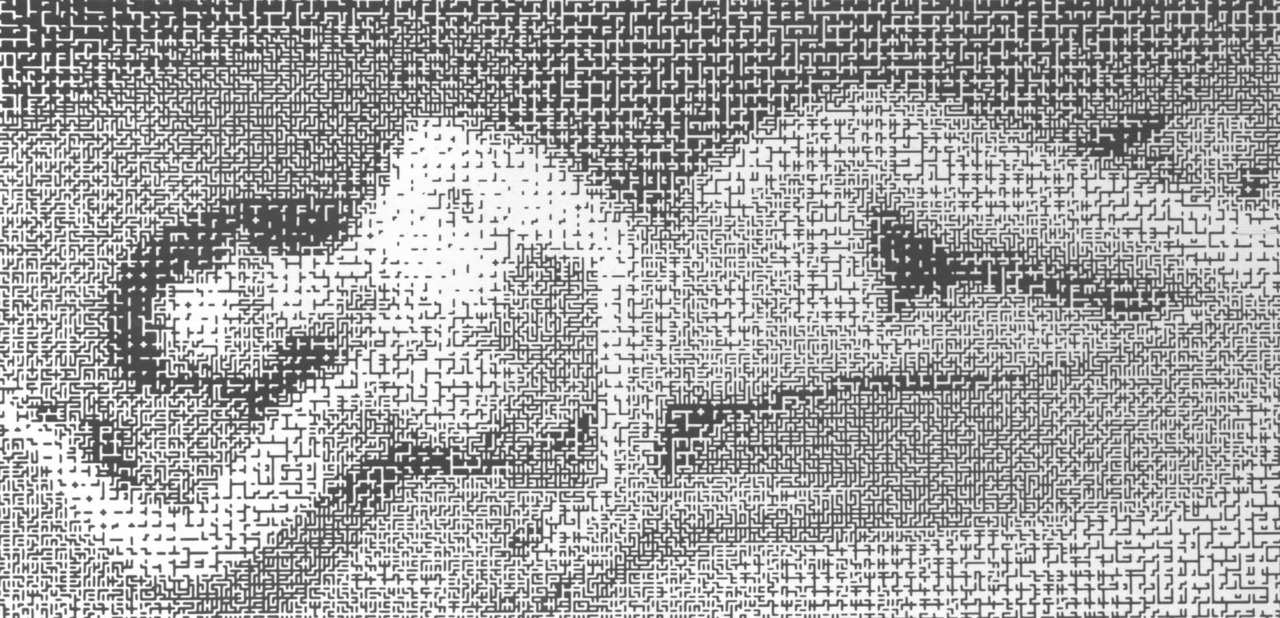
Nude by Ken Knowlton and Leon Harmon, 1966. Contrary to popular belief, it does not use ASCII characters but various pictograms. In 1967 the image was printed in The New York Times, and it was exhibited at one of the earliest computer art exhibitions, The Machine as Seen at the End of the Mechanical Age, at the Museum of Modern Art in New York City, 1968.
More here

